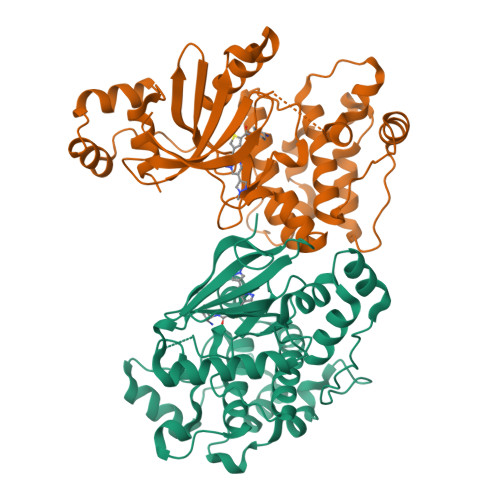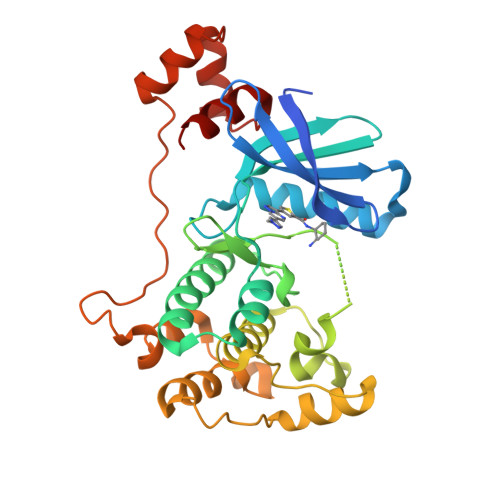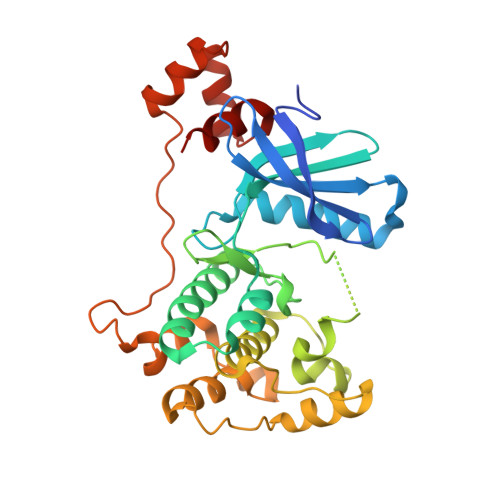Optimization of microtubule affinity regulating kinase (MARK) inhibitors with improved physical properties.
Sloman, D.L., Noucti, N., Altman, M.D., Chen, D., Mislak, A.C., Szewczak, A., Hayashi, M., Warren, L., Dellovade, T., Wu, Z., Marcus, J., Walker, D., Su, H.P., Edavettal, S.C., Munshi, S., Hutton, M., Nuthall, H., Stanton, M.G.(2016) Bioorg Med Chem Lett 26: 4362-4366
- PubMed: 27491711
- DOI: https://doi.org/10.1016/j.bmcl.2016.02.003
- Primary Citation of Related Structures:
5EAK - PubMed Abstract:
Inhibition of microtubule affinity regulating kinase (MARK) represents a potentially attractive means of arresting neurofibrillary tangle pathology in Alzheimer's disease. This manuscript outlines efforts to optimize a pyrazolopyrimidine series of MARK inhibitors by focusing on improvements in potency, physical properties and attributes amenable to CNS penetration. A unique cylcyclohexyldiamine scaffold was identified that led to remarkable improvements in potency, opening up opportunities to reduce MW, Pgp efflux and improve pharmacokinetic properties while also conferring improved solubility.
Organizational Affiliation:
Discovery Chemistry, Merck and Co., Inc., 33 Avenue Louis Pasteur, Boston, MA 02215, United States.


















